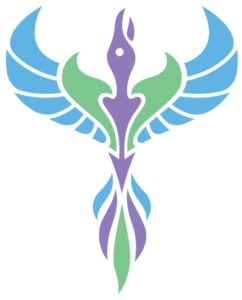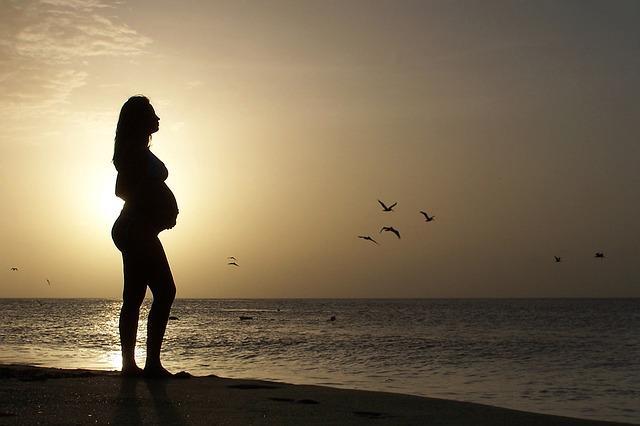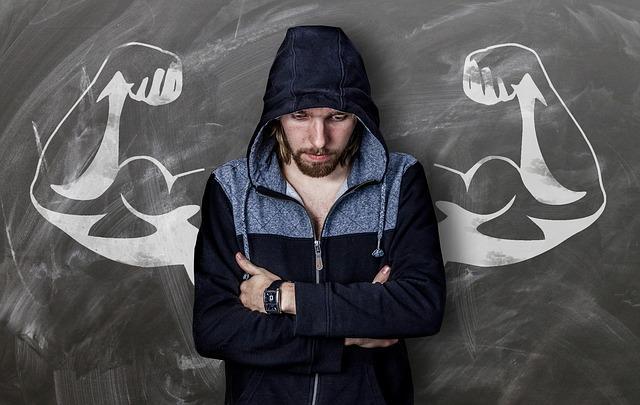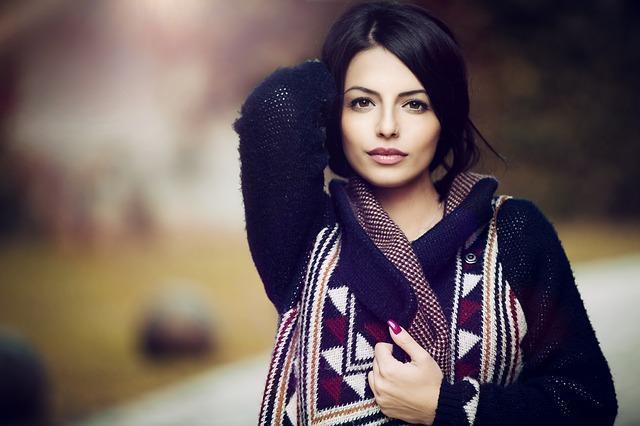Posts by Karen
Acupuncture for Fertility in Brooklyn
Acupuncture is effective at relieving stress and thus, increasing chances of conception
According to Traditional Chinese Medicine, stress acts as a traffic jammer, preventing the free flow of energy throughout the body. This is most easily related to the Western idea that stress causes muscle tension- in both cases, circulation to muscles is reduced, causing pain tightness and limited range of motion. Acupuncture seeks to unblock these pathways to help the energy flow smoothly.
- Acupuncture naturally regulates the body’s chemical balance
- Acupuncture releases endorphins, the body’s natural pain-killing chemicals.
- Acupuncture improves circulation of blood through the body, oxygenating tissues
- Acupuncture facilitates the flushing out of waste chemicals such as cortisol
- Acupuncture helps to decrease heart rate, lower blood pressure and relax muscles.
Acupuncture is an amazing way to treat stress without drugs or therapy; the process itself is relaxing and influences calm for days after treatment.
Acupuncture is an effective method for treating infertility in Brooklyn
Stress is a good place to look when fertility tests have determined that no clear medical reason exists for your infertility. At our office in Park Slope, we focus on using acupuncture to improve fertility in the following ways:
- Reducing stress: stress has a great impact on fertility.
- Increasing blood flow to the reproductive organs, including the ovaries and uterus, boosting the likelihood of an egg being nourished and carried through pregnancy.
- Balancing the endocrine system
If you are looking for an alternative to standard infertility treatments, it is worth trying acupuncture; give our office in Park Slope a call to schedule an appointment today.
How to Boost Athletic Performance with Acupuncture
Acupuncture is deservedly carving its name into the fabric of athletic performance
Yes, acupuncture is a safe and natural treatment, but it is also effective, and this is why its use is growing on professional sports circuits around the globe. Athletes are using acupuncture to improve performance in the following ways:
- Reduces swelling
- Manages pain
- Increases flexibility
Because of its role in supporting optimal wellness, acupuncture fits hand in hand with an athlete’s pursuit of specialization and fitness in a given sport.
Individualized acupuncture to help athletes in Park Slope, Brooklyn
At Community Chiropractic and Acupuncture, our acupuncture treatment is personalized to the individual- given the unique demands of your sport, your level of fitness and physical condition, as well as any ongoing concerns you have regarding pain and range of motion, we customize an acupuncture plan that will work for you.
Acupuncture offers sustainable pain relief
While taking drugs is effective at masking pain, the way it lets you down is by not seeking out the cause of the pain. Acupuncture stimulates your body’s ability to heal itself; when the needles are inserted your body releases endorphins, a natural painkiller, that stimulates pain relief instantly and lasts for a long time. Furthermore, acupuncture decreases inflammation and swelling and helps to improve flexibility, helping you get back on the field faster.
Acupuncture for athletes in Park Slope, Brooklyn
If you are interested in finding out more about how our acupuncutre treatment can help you perform better, give our office a call to schedule an appointment today!
Acupuncture for Athletic Injuries
Athletes in Park Slope are frequently injured
It’s the nature of sport: while you are doing your body a tremendous amount of good, you are also putting a tremendous amount of extra strain on your body at the same time. The degree to which you strain your body depends on the degree of your training, but for each athlete the story is the same- you are doing a lot more to your body than someone who sits on the couch all day. For example, the very nature of muscle building requires you to create micro-tears in the muscle which then repair to grow stronger. Among the most common injuries in sport are joint sprains Injuries in sports generally fall into two categories:
- acute traumatic injury
- overuse/repetitive trauma injury
Acupuncture for athletic injuries in Park Slope
A sprain or strain usually involves inflammation and swelling of the affected region. The standard response that most people find success with involves the acronym RICE: Rest, ice, compression, elevation. And while there is no messing with conventional wisdom, many athletes are finding that another element can be added into the recovery program (although it doesn’t fit anywhere in the acronym): acupuncture.
At Park Slope Chiropractor, we have two main goals when approaching athletic injuries with acupuncture: 1.) to stop pain quickly and 2.) to improve recovery time from the injury. Acupuncture stimulates the body’s adrenaline response to combat pain during treatment, while also rectifying the identified disorder and restoring internal harmony. It is clinically shown to reduce inflammation and swelling.
Treating sports injuries in Park Slope, Brooklyn
At Community Chiropractic and Acupuncture, we have experience treating athletic injuries using both chiropractic therapy and acupuncture. If you are itching to get back on the playing field, but a nagging complaint is holding you back, give our office in Park Slope a call to schedule an appointment today.
Stretching from Bed
Why bother to get out of bed?
If you are feeling extra lazy on your day off, you don’t have to get out of bed to still give your body some relief with a good stretch. If you are destined for bed on a rainy Sunday, remember that muscle tension will still accumulate; so make some moves from the mattress to keep them at back and keep on relaxing!
From bed, let the stress melt away and try a few simple stretches.
…and of course, always remember to practice deep breathing, especially in bed. The extra influx of oxygen will help you relax further and treat your muscles at the same time. Here are stretches that target the back and hips- two regions that tend to accumulate the most tension during the regular course of life.
- Hamstring stretch: lay flat, and lift one leg up. Raise it as high and straight as possible while keeping your butt planted on the bed. Hold 30 seconds, then switch legs.
- Knee to chest: lay flat. Bring one knee up to your chest, clasping the thigh with both hands. Hold 30 seconds, then repeat with opposite leg.
- Spine twist: Lay flat, bring both knees up to your chest; cross them over and drop down to the right side of your body. Extend left arm the opposite direction and look over your left shoulder. Hold 30 seconds and repeat.
Relaxing, stretching and feeling better with chiropractic in Park Slope
The bed is a cornerstone of wellness. At Park Slope Chiropractic, we want to help you leave pain behind so that you can relax well all the time. If you are suffering from long-standing pain, give our office a call to schedule an appointment today. We can help you determine the root cause of your pain and set a course for treatment that involves chiropractic adjustment, stretching and strengthening that will keep your pain at bay.
What Time of Day is Best for Working Out?
The real debate should be: what time suits you best for working out?
Whether you feel the motivation first thing when you step out of bed or need a workout to wind down after a day’s work, whatever way works for you is the right way! However, it is always worth noting the advantages of each time in case you are considering changing your routine. You can also adjust your workout time to match your motives: do you want more muscle? or to lose more weight? Read on to find out when the best time is to do each.
Working out in the morning vs. afternoon
- Morning: attention weight watchers! A morning workout has been shown to curb appetite which means that not only are you burning calories but also limiting their intake, a big boost for your caloric balance. Furthermore, the less food you have in your stomach, the more body fat is burned during a workout. Sticking to your workout schedule is made easier in the mornings because it is less likely to conflict with other social engagements and you haven’t corroded your willpower after a long day at work.
- Afternoons offer the chemical advantage for working out. Stress hormones (which aid in fat storage) are lowest and testerone (important for muscle growth) is highest in the afternoon. Your body temperature, and thus muscle temperature, is higher meaning that you are more flexible and you may take more out of each workout. Furthermore, you performance will be at its peak because heart rate and blood pressure are low and your brain is sharp for enhanced reaction time.
The takeaway from working out in the morning vs. afternoon
Some people would look at this and say there is a clear chemical advantage working out in the afternoon. While this may be so, a morning time routine can be more effective if it fits your lifestyle better. We can help get your body in conducive shape to reap the benefits of a workout no matter what time of day you think is best. Give our office in Park Slope a call to schedule an appointment today.
Dr. Karen Thomas, D.C.
Are you Neglecting your Lower Back Muscles
Even the most conscious gym-goers can neglect important muscles
Case in point: the muscles of the lower back which are often neglected during people’s pursuit of the “mirror muscles-” abs, biceps and pecs that make you look attractive but leave you short on stability. Building a great body means building balance, and the muscles of the lower body are essential for stability and spinal health. What’s the point of looking great or having a lot of muscle if the most crucial structures of your body can’t bear the load that this extra muscle brings on? Here are three new sets of muscle to focus on during your next gym session:
- Extensors: posterior muscles which allow for lifting and standing. Among them is the erector spinae which allows the spine to stand straight.
- Flexors: attach to the front of the spine and allow for flexing, bending and lifting.
- Obliques: attach to the side of the spine and allow for rotation.
All these muscles work together to help you maintain proper posture, which is the first pitfall of not training them- it makes posture all the more difficult. From here, the problems compound, especially when you are asking your lower back to bear more strain as you scale up your ab routine.
Neglecting your lower back no longer
There are many exercises and stretches which can be easily learned and quickly added into your routine to ensure that you are rounding out your exercise and contributing to spinal health. After all, these are the muscles that matter most for the longevity of your body. Chronic pain, postural problems and degradation of the spine can all be prevented by paying attention to the conditioning of the lower back muscles. To resolve pain in the lower back, establish good posture and restore spinal balance, give our office in Park Slope a call to schedule an appointment today.
Dr. Karen Thomas, D.C.
Putting a Needle in Period Pain
Acupuncture is a powerful tool for women’s health
To demonstrate this point, let’s take a look at the efficacy of acupuncture when it comes to treating something common during the days leading up to and during a period: cramps. Scientifically known as dysmenorrhea, pain during menstruation does nothing more than add to the stress of your period. Pain is most often experienced in the lower abdomen, pelvis and lower back, and generally responds well to pain relieving medication. However, some women look for a more natural way to deal with menstrual cramps and acupuncture is a great way to do this.
How acupuncture works to treat menstrual pain
By freeing the body from stagnation, acupuncture encourages your blood to circulate smoothly, reducing pain from cramps and headaches. When combined with simple stretching that focuses on the abdomen, hip flexors and lower back, you can effect great improvements with pain relief without reaching into the medicine cabinet.
Your acupuncture specialist in Park Slope
Acupuncture can add another dimension of effective and natural support for many women’s health issues including:
- Menstrual pain
- Infertility
- Pregnancy and postpartum life
- Menopause
- Endometriosis
We are proud to be a resource for women’s care in the Park Slope area. If you are looking for an alternative from traditional western approaches to your particular issue, give our office a call to schedule an appointment today.
Dr. Karen Thomas, D.C., L.Ac.
Are you Leading a Pro-Inflammation Lifestyle?
Inflammation is an individual struggle
As we age, our bodies will face their fair share of degradation and, for many of us, this will include a modicum of painful inflammation; this is a reality of nature. What is not inherent in nature is the choices we are making as a society and on an individual level that actually encourage inflammation when it doesn’t need to be there. Obesity and diabetes are the current epidemics of our age and the kind of diets that contribute to those conditions are the ones that are sure to contribute to inflammation as well.
Take stock of your habits to see if you are living a pro-inflammation lifestyle
Below you will find factors that contribute to inflammation, but only those that are within your control; genetics, autoimmune diseases, virus and injury are not included.
- Smoking
- High-sugar foods: raise the presence of an inflammatory markers called cytokines
- Saturated fats: increase adipose (fat tissue) inflammation and can simultaneously affect chronic or acute inflammation
- Too much stress and too little sleep: raise your level of cortisol, a stress hormone which is linked to inflammation.
- A sedentary lifestyle: When your muscles move, they produce anti-inflammatory substances; if you’re not moving, this isn’t happening for you.
How we help reduce inflammation in Park Slope
Chiropractic targets inflammation at the source: when joints are misaligned, inflammation is never far behind. When a joint remains misaligned, and inflammation is allowed to subside, it can create pain in the affected area. Correcting misaligned joints and reducing inflammatory cytokines are two key ways that chiropractic helps reduce the presence of inflammation. Give our office a call to schedule an appointment and start turning around a pro-inflammatory lifestyle today!
Dr. Karen Thomas, D.C.
Balancing out the Junk!
Define: Junk Food
It’s the kind of food that gets your mouth watering at the very thought. We can all think of our favorite junk food, but what does the term really entail? From McDonald’s to freezer pizza to donuts, junk food is pre-prepared food that has little to no nutritional value. It is usually high in processed ingredients, sugar and bad fats. It is formulated to taste great and treat your brain’s reward complex, make you feel full and give you the baseline of nutrition to stay alive but not much more!
Junk food is not your friend
All that sugar:
- Spikes blood-sugar levels
- Inflames tissues
- Raises blood pressure
- Raises and drops insulin levels
The fat raises levels of undesirable cholesterol and your risk for type 2 diabetes while the sodium causes your body to retain water, making you feel bloated but also contributing to an enlarged heart muscle.
Balancing out the junk food diet
So you’ve gone on a junk food bender and you are looking to recover. Don’t feel bad- with our on-the-go lifestyle, the drive-thru or ready made meal is almost an essential from time to time. However, it is important to not make this your only source of fuel. Below we have come up with ways to balance a junk-food bender.
- Anti-inflammatory ingredients: junk food has a tendency to raise inflammatory markers in the blood, which makes it important to balance this by eating anti-inflammatory ingredients. Adding turmeric to your next stir fry is a great place tos tart.
- Water, water, water! to fight inflammation and nourish the cells of your body.
- High-fiber foods: to balance blood sugar and optimize the function of your gut.
- Healthy starches: rather than the good-for-nothing starches that characterize junk food.
Food is fuel so therefore food should be your friend!
At our office in Park Slope, we are aware of the difficulties inherent in a fast paced lifestyle; we are often at the mercy of the clock which leaves us little room for choice when its time to eat. If eating is a constant challenge, let us help you find the time to eat right and make healthy decisions across the board.
Dr. Karen Thomas, D.C.
Finding Success with Goal-Setting
Goal-setting helps you figure out where to start
Spring, the season of renewal, is right around the corner and there is no better time than spring to make powerful changes in your fitness routine. While it is more common to make fitness resolutions at New Years, we think it makes more sense to start when the weather is warming and the colors are getting brighter- there just seems to be more energy to tap into. For people looking to shed their winter skin and join in the movement of spring, it can help to focus on realistic goal-setting. Start by finding yourself on the fitness spectrum, with no shame: are you a no-fitness-fanatic, a dedicated gymrat, or something in-between. Before you set any goals, it is important to be honest with yourself and know just where you stand.
A checklist for success in goal-setting
- Choose an appropriate time frame
- Start with just one goal
- Write it down
- Schedule the time
Make goal-setting easier with our help at Community Chiropractic & Acupuncture
The feeling of fully achieving a goal can be a powerful incentive to continue with more ambitious goal-setting in the future. Let’s leave the winter in the rear view mirror and reap the benefits of the season to get our bodies feeling their healthiest. If you need help addressing long-standing limitations such as muscle pain or problems stemming from spinal conditions, we are your resource! At our office in Park Slope, we will help detect the true cause of your dsyfunction and create a plan for healing that will allow you to focus on successful goal-setting. Give our office a call to schedule an appointment today!
Dr. Karen Thomas, D.C.










